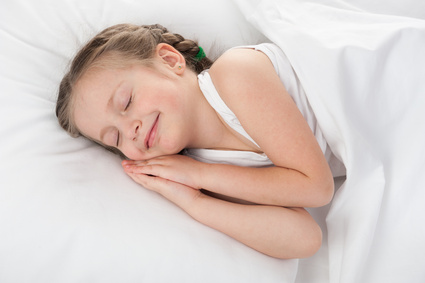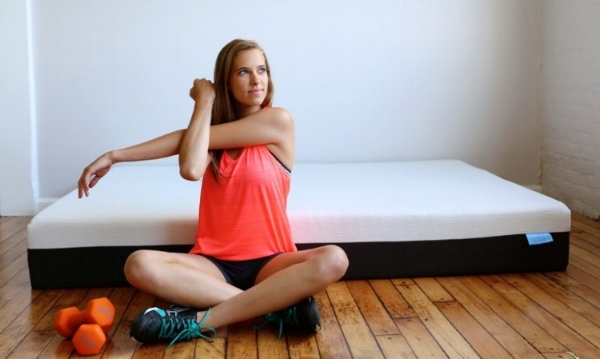Best Mattress Options for Your Age Group
If you’ve been nosing through endless mattress review sites trying to find out what kind of mattress you should buy, you may find yourself spinning in circles. We’ve been inventing, engineering, and selling beds for over 25 years, and have found that there seems to be a clear pattern as to what kind of mattress people buy, and it often ties to their age. After all, it’s pretty obvious that a young child has completely different requirements for sleep than a twenty something has, and someone who is fifty, even if they are aging gracefully, has different mattress sensibilities than someone who is eighty. So, in this guide, we’ve divided up the timeline by age group, and we think you might find it helpful, to at least start from this point, anyway.
Of course, many variables come into play, including whether or not you sleep alone or entwined, whether or not you have physical limitations that keep you in bed longer than 6-8 hours, medical issues like sleep apnea or sciatica, or simply suffer from wear and tear from sports injuries or work related factors. Generally, though, we have found that particular age groups generally look for certain qualities in a mattress that are somewhat predictable, so we’ll approach your options looking through the lens of age.
Infants and children seem to be able to crash almost anywhere. But an exhausted parent, busy young professional, or baby boomer, well, it’s going to be more complicated. That’s why it’s helpful to take ages and your station in life into account when choosing your next bed.
Best Mattress Options For Young Children And Teens
Clearly, parents attempting to move their children from the crib to their first “big girl” or “big boy” bed are looking at several factors when considering the cosmic leap, the most important of which is comfort and proper support for growing bones and bodies, and safety, too. Most parents have some interest in what’s being used as a fire retardant in today’s beds, in addition to the components used, even down to the adhesives, which are typically used in almost every bedding option that they might consider.
When customers used to call me, I gave them a little working list of features to look for and questions to asked if they moved on to other retailers. In fact, the list is really the same for safety conscious older folks too, as many people try to find a safe, non-toxic sleep surface that doesn’t off gas fumes and nasty VOC’s. I can offer this reassurance. Most companies, especially those selling products online, have taken these issues to heart as the buying public has become more educated about them. For example, instead of using sprayed on flame retardants like Boric Acid, the same ingredient used in insecticides, most are using either an inert synthetic fire barrier, or a natural material that might be made of wool or cellulose. If you want to know for sure, just ask, either when on the phone, or if engaged in an online chat. Look for natural “FR” materials, such as a fire sock or barrier material which is used in the outer encasement or cover of the mattress.

Also, seek out third-party standards like a CertiPUR-US, Oeko-Tex, or Greenguard Gold certification, which indicate that a mattress has been independently tested to have low VOC emissions. If you really want to stay away from polyurethane (though if you are buying a mattress with CertiPur-US certification, it’s going to be clean material) look for beds with the toughest certification such as the Global Organic Textile Standard (GOTS) label— these beds will typically contain no polyurethane foam and are free of certain other types of questionable chemicals.
As far as the comfort and support, and the feel of the actual mattress, younger children, even teenagers should be adapted to as firm a mattress as possible, in our opinion. Spine alignment, which helps form healthy postures and minimizes back issues down the road, can be introduced early on if parents provide the right bed. Avoid something too soft, as it is typically restrictive, is difficult to turn on, and promotes poor sleep hygiene by constantly waking your child up, disrupting REM sleep. Go with a firmer foam hybrid, firmer coil hybrid, or natural latex for kids 5-19. They’ll be well rested, and more likely to be easily adaptable to other sleep surfaces as they venture off on their own. Older teenagers generally will seek out a medium firm mattress, something supportive but with a little bit of nestle factor, and softer latex, or even a latex/coil hybrid is a good choice, especially if you want to narrow it down to say, the 16-20 year old bracket. We still want to provide support and encourage good back support and posture, even at this stage of the game.
Also note, and this is of paramount importance, that it’s best to put infants and younger toddlers on very firm surfaces, to reduce the risk of SIDS, then moving them on to a mattress of medium firmness is best. Use a mattress protector to keep liquids and other materials away from your investment.
Best Mattress Options 20-35 year old achievers
When it comes to choosing the best mattress for teens and those in their 20’s and 30’s, it’s important to consider exactly how you sleep. Because sleeping habits begin to firm up in our early 20’s, and we’re not saddled with medical conditions and generally keeping our bodies in tip top shape while at the same time exhausting them, choosing the optimal sleep surface during this time will have lifelong effects. That’s why it’s important to take into account sleeping positions.
Stomach sleepers, for example, need a mattress that’s on the firmer side to prevent uncomfortable curvature of the spine, though you do want to allow for some immersion, making memory foam or a softer polyurethane or latex component on the top of the mattress a good choice. The bottom foundation or support layers should be as firm as you can tolerate them. Side sleepers, on the other hand, benefit from a more yielding bed that will conform to their body and relieve pressure on shoulders and hips. A “hybrid” mattress that combines various components, offering up a medium to medium firm firm feel is often a good choice, as are not-so-firm innerspring mattresses with individually wrapped or “pocketed” coils.
Back sleepers have more of a universal selection and aren’t as limited on options as are side or belly sleepers, though I’ve always advised a firmer mattress option if you can tolerate it. Many different support levels and materials will work, so go with what feels the most nest like and embracing, but with enough firmness so that you don’t get stuck, unable to move, and being trapped in a pit of quicksand, which will disturb deeply restorative sleep.
Best Mattress Options For 35-55 : Balancing Family Life And Career Demands Even Better Sleep Hygiene
During our mid-thirties and through our fifties, we’re busy. You may have full blown families, high stress jobs, and other factors that make sleep even more important. Many of us in this age category have a sleeping partner or kids who like to climb into bed with us. If you don’t want to get jostled every time someone sneezes, climbs out of bed, or doesn’t fall asleep when you do, look for a mattress that minimizes motion transfer.
Memory foam is probably the best option for a top layer on any mattress option. Even choosing a hybrid foam mattress that has foam over a pocketed coil component is good for minimizing motion transfer. Because the coils move independently of each other, motion in one spot stays isolated from other parts of the bed.

Hitting our strides in our 40’s-50’s usually brings a few changes that can interfere with sleep, such as body aches back pain, or stiffness at shoulders or hips from old injuries that have come to call upon you once again. We recommend memory foam or latex to squeeze increased comfort from your sleep surface, since those materials contour to the body to reduce pressure on the joints and spine. If you have chronic neck or back issues, consider looking for a chiropractor recommended mattress that carries the COCSA Seal of Approval, which means it meets the Congress of Chiropractic State Associations’ standards for supporting spinal health. Get a pillow that is going to promote more side sleeping without tilting your head too much, as conditions such as GERD and sleep apnea begin to appear in this age group, especially if you have added weight and are not doing as much aerobic exercise as you should.
Women with menopause-related hot flashes might want a mattress that retains less heat. Innerspring or hybrid mattresses typically sleep “cooler” than foam ones, and gel foam options will be a big help. Also seek out technical fabrics which are designed to offer cooler sleep surfaces by wicking away heat, too. Latex, because it naturally allows more air circulation, tends to be cooler than memory foam, but can be warm if you are a hot sleeper.
Best Mattress Options For 60+ With Active Lifestyles
People who are hitting their golden years are living longer, remaining active, eating better, and want to feel like they’re 30 all over again. We’ve talked to countless thousands of these folks, who scoff at the term “seniors” or “winding down”. The reality is, though, considering just the right sleep surface is more important than ever as we glide into our shining moment. A couple of things to consider are transferring, that’s getting in and out of bed, since it becomes increasingly difficult, and you should factor that in if you plan on keeping a mattress for more than 10 years, optimal hip and shoulder support.
Don’t over think it though. Ideally, you don’t want to go too soft, making getting in and out of bed a task. You want good edge support, and many foam mattress designs actually build in a perimeter “wrap” of foam that is ever so slightly firmer so you can sit on the edge of your mattress and change your shoes, or easily transition.
Fact is, we’re up during the night a wee bit more than we used to be. Something not too hard and not too soft, with a just-right amount of contour to provide pressure relief for pelvic and shoulder joints which can be inflamed or simply worn out, needing as much pressure point relief as possible while sleeping..and when your body is repairing itself. Beds that are too soft, where you plunge into the middle can be harder to maneuver around in, making you feel as if you’re “fighting” against the bed when you try to switch positions.
While seniors may find it harder to sleep (insomnia is the number one complaint among those age 60 and older), not getting enough rest is linked to a range of negative health outcomes, including an elevated risk of memory loss. Early to bed, early to rise…